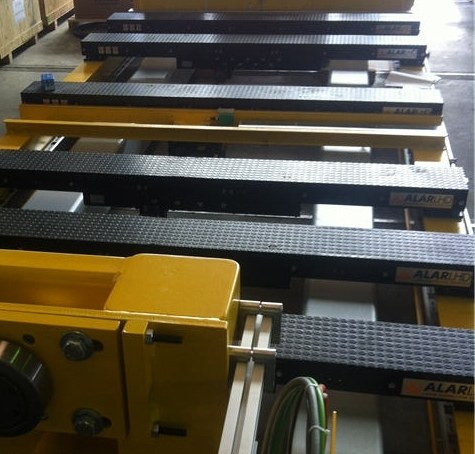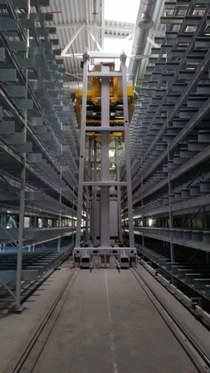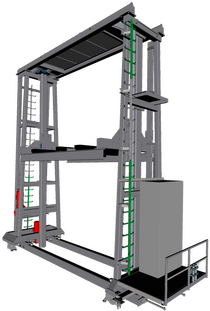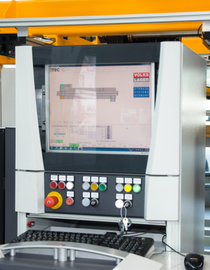
11.August 2016
Automatic Melamine Paper Pallet Warehouse Ensures a Contineous Production on the Presses
 Until now there is usually a block warehouse from which the short-cycle press lines were provided with coating materials through forklifts.
Until now there is usually a block warehouse from which the short-cycle press lines were provided with coating materials through forklifts.The ever-increasing variety of decors leads to an increasingly stock of pallets with melamine papers. Smaller batch sizes on the short-cycle press lines additionally require a more frequent change of décor. In view of the higher performance of the short-cycle press line this previous form was no longer cost-effective working.
Avoidance of Internal Forklift Traffic
SYSTRAPLAN, supplier of automatic warehouse systems and transport- and handling technology was awarded the contract for a high-bay storage for automated storage of pallets with melamine papers.With this storage and retrieval machine the pallets that are collected by melamine paper type are directly stored on delivery. The racks’ positions are approached in the required sequence. For the handling of the pallets are telescopes used that grip under the pallet or carrier plate. A mixed storage of half-size or full formats as well as intermediate measures is possible.

Connection of New and Existing Short-Cycle Press Lines
When providing the pallets for the short-cycle press line, the system accesses the last started stack of the same variety. A quick and easy decor change is achieved by means of a direct connection of the new short-cycle press line. Residual pallets can directly be returned into the high-bay storage.Other, already existing short-cycle press lines are linked to the automatic high-bay storage through a transfer carriage.
Optimization of the Production Logistics
After a smooth installation and connection of the existing surroundings and WEMHÖNER press line, the new installed automatic melamine paper pallet warehouse leads to a significant optimization of the internal production logistics.For the control of the system comes a Siemens S7 into use. Integrated are energy recovery modules that return the generated energy of brake actions to the power supply. In this way the energy costs are reduced to up to 20 %.

